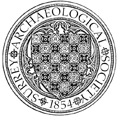Southwood Manor Farmhouse, Burhill Road, Hersham
Visit by M Higgins of the DBRG/SCC to consider whether further recording would be valuable. Southwood Manor Farm House is a large building now divided into three. Number three is the right-hand portion comprising the majority of a timber-framed wing; a narrow timber-framed range comprising two builds each of three bays, mostly floored. Neither of these appears to be a complete house and it is likely that it has always served a support function to the attached farmhouse. The rear three bays have smoke-blackened timbers and a side purlin roof of a late medieval character.


